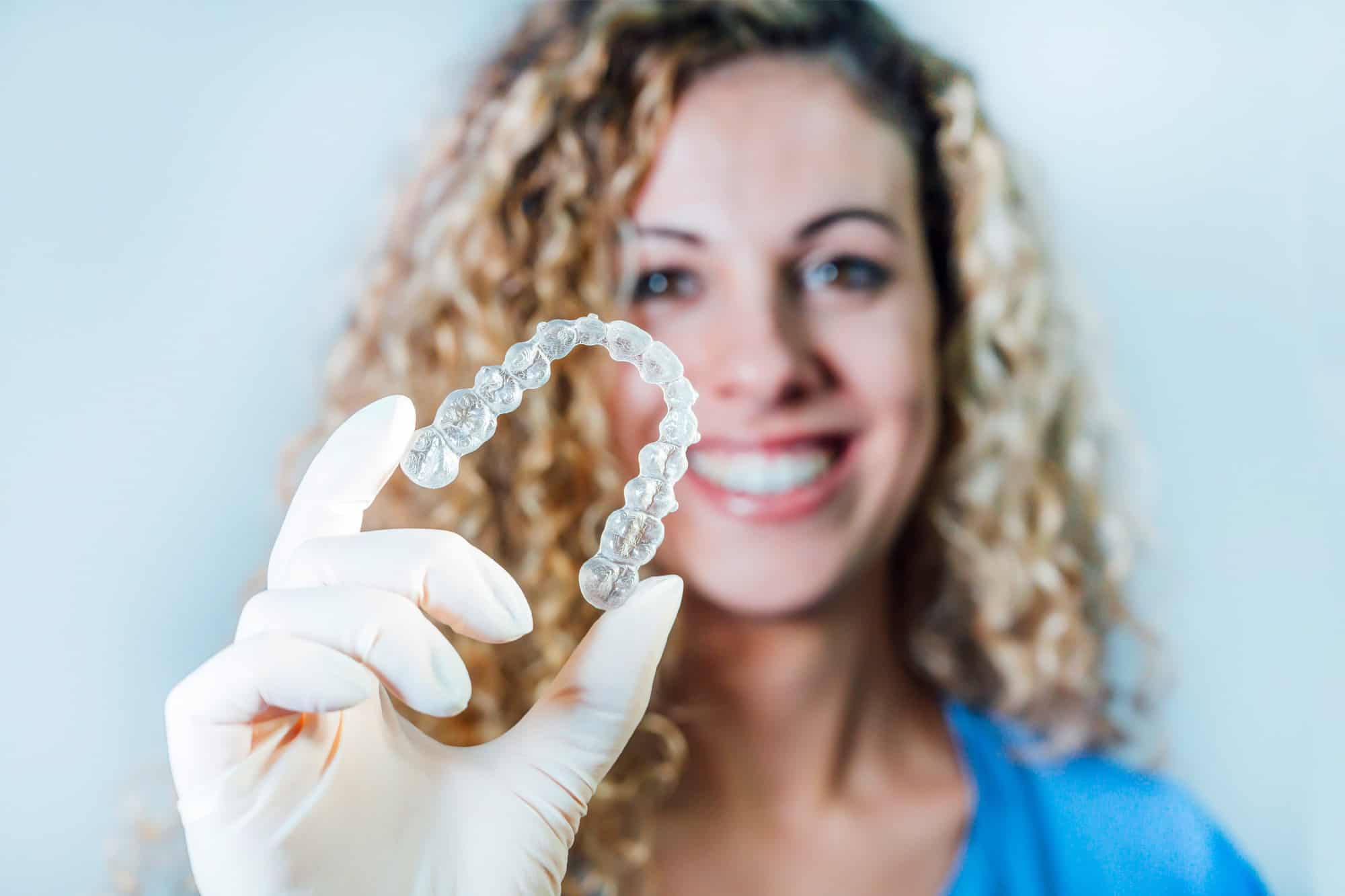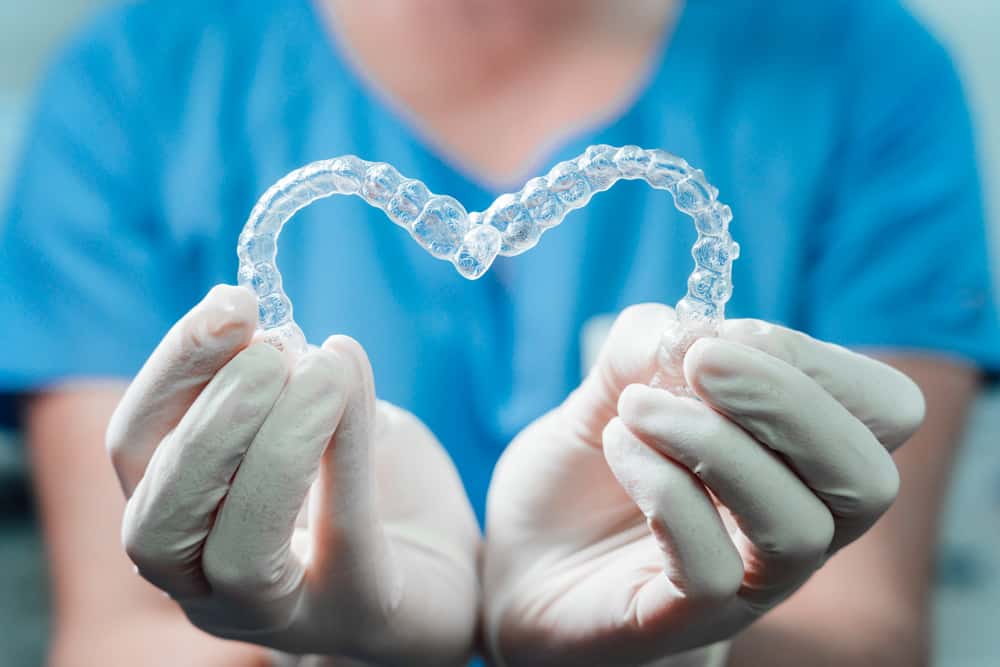
14 Aug How Much Does Invisalign Cost?
Modern-day technology has spoiled us with the luxury of choices, even in orthodontic treatments. One of these advances, Invisalign Aligners, has emerged as a popular choice. It is a potent alternative to traditional metal braces for people who want to straighten their teeth discreetly. If you are considering this option, cost may be a concern. Indeed, Invisalign aligners are an investment, and certain factors may influence the cost. Therefore, we would like to break down the expenses for you before you visit your dental care specialist and make the final decision. First, let us explore the basics.
Benefits of Using Invisalign
Invisalign offers several advantages over traditional metal braces, making it an attractive choice for many individuals. Its near-invisibility is one of the most compelling benefits. Invisalign aligners are made from clear, BPA-free plastic that snugly fits over your teeth, making the aligners almost undetectable. Such discretion allows users to straighten their teeth without feeling conscious of their appearance. That can be a significant boost in self-esteem in both their professional and personal lives.

Next, Invisalign aligners are removable, offering great flexibility that cant’ be matched by traditional braces. You can take out your aligners when eating or drinking, with no major dietary restrictions as with conventional braces. This factor also simplifies oral hygiene, as you can brush and floss normally without navigating around wires and brackets. Additionally, there’s very less risk of mouth and gum irritation since there aren’t any metal components. Lastly, this treatment often involves fewer office visits, as you get multiple sets of aligner trays to swap out every couple of weeks, making it a convenient choice for those with a busy schedule.
How Do Invisalign Aligners Work?
The Invisalign system uses transparent, custom-fit aligners to gently and slowly straighten your teeth. Thanks to the integration of cutting-edge 3D computer imaging technology, this orthodontic treatment remains almost invisible, making up for a discreet method for improving your smile. When you meet your orthodontist, they develop a personalized treatment plan for you. They will also keep tabs on the progression of your teeth from the initial position to the desired final alignment. In addition, you will be replacing your aligners about every two weeks, progressively shifting your teeth until they achieve the optimal alignment, resulting in a beautifully straightened smile.
How Do Teeth Move with Invisalign?
When wearing your Invisalign aligners, controlled forces are applied to specific teeth at various stages of your treatment. No matter how many aligners you use during the process, each set is designed to move only certain teeth at once. This targeted approach offers a more controlled, efficient, and generally less painful experience than traditional metal braces, making Invisalign a much sought-after choice.
Things to Consider When Choosing Invisalign
While Invisalign may benefit most patients, there are some key considerations to remember when deciding on this treatment option. Firstly, Invisalign requires discipline. You can remove your aligners, which may be a temptation to leave them out for much longer than advised, but the success of Invisalign depends on the user’s commitment to wearing the aligners for the recommended 20 to 22 hours daily. Secondly, Invisalign may not be suitable for all cases. Your orthodontist would still want to address severe crowding, rotation, or alignment issues with traditional braces. Finally, the cost of Invisalign is typically higher than traditional braces. Assess your financial situation, dental insurance coverage, and potential financing options before moving forward with the treatment.
Factors Impacting the Cost of Invisalign
The cost of Invisalign treatments can range from $3,000 to $8,000, with the national average hovering around $5,000. However, these numbers are just averages. The final price can vary significantly depending on several factors, including:
Geographic Location
Just as cost-of-living expenses vary by location, so do dental care costs. More affluent areas or major metropolitan cities tend to have higher Invisalign costs due to greater operational expenses. Therefore, where you live can significantly impact your treatment charges.
Complexity of Treatment
The nature and severity of your issues play a crucial role in determining the cost. The price will be higher if your problem is more complicated and requires more time or aligner trays. Conversely, simple alignment issues that can be resolved quickly will cost less.
Provider’s Experience
The expertise, training, and reputation of your chosen dental practitioner can also affect the cost. Someone with extensive experience and a successful track record with Invisalign might charge more for their service. It is essential to find a balance between cost and quality of care when selecting your provider.
Retainers
After the treatment, retainers are often required to maintain the teeth’s position. The cost of these retainers, ranging from $100 to $500 per set, may or may not be included in the initial treatment estimate.
Insurance and Invisalign
Dental insurance can significantly affect the out-of-pocket expenses for Invisalign. Many dental insurance plans cover Invisalign treatment to the same extent as traditional braces, which means they cover a certain percentage or up to a specific dollar amount. Some insurance plans may cover up to $3000 of your cost. If you have dental insurance, it’s crucial to consult with your provider to understand what is covered and what isn’t.

Financing Options
Many dental offices offer financing options to make the Invisalign treatment more manageable. These may include payment plans that spread the cost of the treatment over a specific period, often with interest. You can also explore Health Savings Accounts (HSAs) or Flexible Spending Accounts (FSAs) to help manage the cost of orthodontic treatments like Invisalign. These accounts allow you to use pre-tax dollars to pay for eligible healthcare expenses, resulting in significant savings.
Aftercare Costs
As mentioned before, after completing your Invisalign treatment, your orthodontist recommends wearing a retainer to maintain your teeth’ new position. The retainer is often an additional cost that comes post-treatment and varies based on the type of retainer recommended and your specific needs. In addition to retainers, you might need to factor in the costs of ongoing dental care, including professional cleanings, x-rays, and regular check-ups. While the primary expenses of Invisalign are upfront, it’s crucial to consider aftercare costs when budgeting for your treatment.
Visit Mitchell Dental Spa Today!
Investing in your oral health is a lifelong investment in your overall health and well-being. While the cost of Invisalign can be substantial, its benefits make it a worthwhile consideration for many. With careful planning, proper consultation, and thorough research on insurance and financing options, you can make the costs more manageable. Talk to your nearest dental specialists today for better assistance. Schedule your Invisalign consultation at mitchelldentalspa.com or call us at (312) 642-1014. We are conveniently located in Watertower Place in Chicago, IL.
Learn More
Ready To Get Started?
Call us at (312) 642-1014 or schedule an appointment online. We will answer any questions and concerns, and help you determine if veneers are right for you.



Sorry, the comment form is closed at this time.